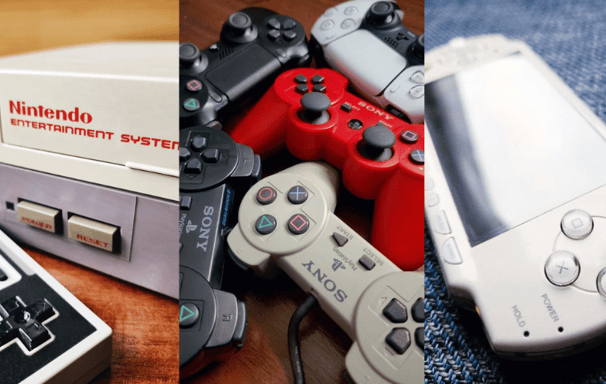The Rise and Fall of Sega – How a Gaming Giant Lost Its Edge

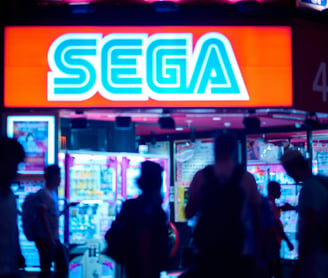
Good tactics can save even the worst strategy. Bad tactics will destroy even the best strategy.
-George S. Patton
Sega’s console journey is one of the most fascinating stories in gaming history. It’s got everything—bold innovation, fierce rivalries, a touch of corporate miscalculation, and a whole lot of beloved classics. If you grew up with a Sega console, you probably remember the thrill of booting up Sonic the Hedgehog, the futuristic coolness of the Dreamcast, or the sheer dominance of the Genesis. But despite their moments of brilliance, Sega’s hardware division crashed and burned, leaving Nintendo and Sony to pick up the pieces. What happened? Grab your VMU, blow the dust off your cartridge, and let’s dive in.
From Arcades to Living Rooms
Before Sega entered home consoles, it dominated arcades with quarter-munching hits like Space Harrier, OutRun, and After Burner. But by the mid-80s, gaming was shifting to living rooms, and Sega wasn’t about to be left behind.
Before the Master System, Sega launched the SG-1000 and SC-3000 in 1983—on the same day as Nintendo’s Famicom. While these systems had limited reach, they laid the groundwork for Sega’s entry into the home console market. The real battle, however, began with the Master System.
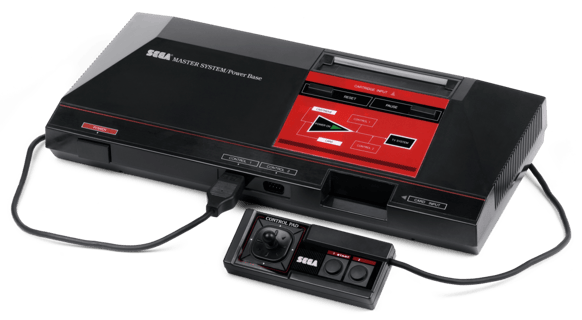

Sega Master System (1986)
Sega Genesis (Mega Drive) – The Golden Era
If there was a moment when Sega ruled the gaming world, it was the early ’90s. The Sega Genesis, known as the Mega Drive outside North America, took the fight directly to Nintendo’s SNES. With blast processing (okay, it wasn’t real, but it sounded cool), a bold “Genesis does what Nintendon’t” ad campaign, and the debut of Sonic the Hedgehog, Sega was suddenly the cool alternative to Nintendo’s family-friendly image.
The Sega Master System debuted in Japan in 1985 (as the Mark III) before reaching North America and Europe in 1986. This 8-bit, cartridge-based console boasted superior graphics and sound compared to the NES. It had some great games (Phantasy Star, Alex Kidd in Miracle World), but Nintendo’s exclusive licensing deals left Sega struggling for third-party support. Still, it was a start.
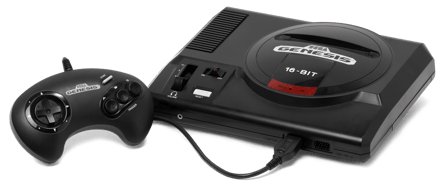

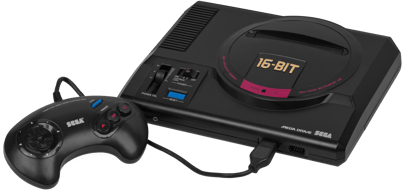

Sega Genesis (1989)
Sega Mega Drive (1988)
What made the Genesis work?
A strong game library – Sonic the Hedgehog, Streets of Rage, Phantasy Star IV, Gunstar Heroes
Aggressive marketing – Sega wasn’t afraid to call out Nintendo
Sports dominance – EA Sports titles ran best on the Genesis
Edgy attitude – Sega wasn’t just a console; it was a lifestyle
Sega made gaming feel rebellious. Genesis was for the kids who liked their games fast, loud, and full of attitude. But then... things got weird.
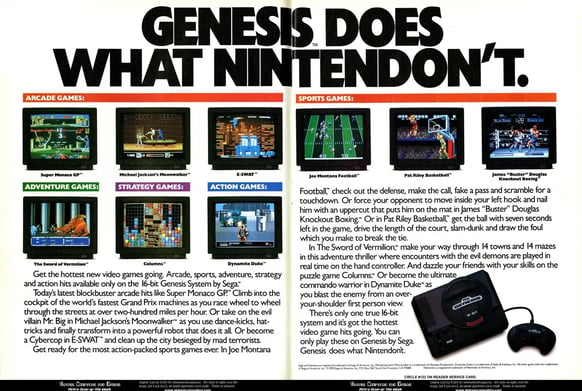

Sega CD & 32X – The Awkward Phase
Success can make companies a little too ambitious, and Sega was no exception. In an attempt to extend the Genesis’s lifespan, they released the Sega CD and later, the 32X. Neither went well.
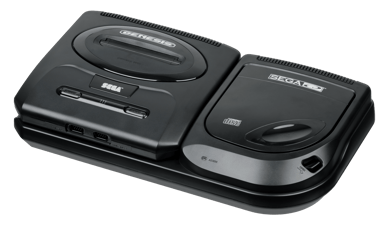

Sega CD (1992)
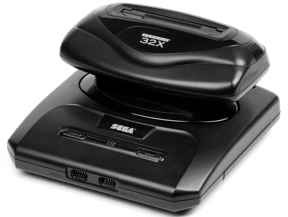

Sega 32X (1994)
The Sega CD had some gems (Lunar: Silver Star Story, Sonic CD), but it was expensive and had too many FMV-heavy games that aged like milk. The 32X? That was just confusing. It was an add-on to a console that was about to be replaced. Imagine buying a brand-new stereo for your car the day before trading it in. Yeah, it was like that.
Sega Saturn – The Misstep
With Sony entering the console market and Nintendo gearing up for the N64, Sega needed a killer system. The Saturn could have been it, but Sega’s execution was a disaster.
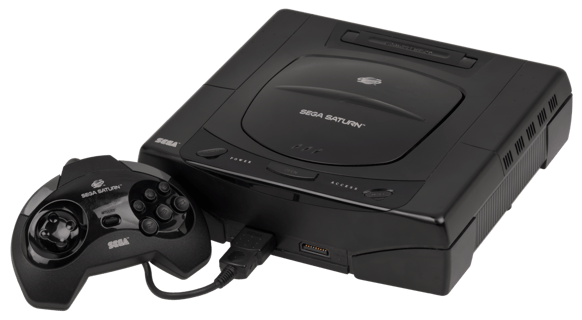

Sega Saturn (1995)
Problems with the Saturn:
Complicated hardware – Developers struggled to make games for it
Botched launch – Sega surprise-released the Saturn early, alienating retailers and developers
Weak third-party support – Without strong third-party games, the library felt limited
Despite some great games (Virtua Fighter 2, Nights into Dreams, Panzer Dragoon Saga), the Saturn never found its footing. Sony’s PlayStation had smoother 3D graphics, a friendlier development process, and a marketing campaign that screamed, “We are the future.” Sega was struggling, and things were about to get worse.
Dreamcast – A Brilliant Swan Song
The Dreamcast was ahead of its time. It had online gaming before Xbox Live was a thing. It had a second screen on the controller with the VMU. It had Shenmue, Crazy Taxi, Jet Set Radio—games that felt genuinely fresh.


Sega Dreamcast (1998)
It should have been a success, but it wasn’t. The PlayStation 2 loomed on the horizon, and people held off buying a Dreamcast because they wanted a PS2. The Dreamcast sold well initially but lost steam fast. Sega pulled the plug in 2001, ending its run as a hardware maker.
Why Did Sega Consoles Fail?
If we’re ranking the reasons Sega’s consoles fell apart, here’s how it looks:
Bad hardware decisions – The 32X, the Sega CD, and the Saturn’s complicated design hurt their momentum
Marketing missteps – The rushed Saturn launch and mixed messaging around the Dreamcast didn’t help
Competition – Sony and Nintendo were too strong
Lack of third-party support – Developers weren’t fully on board, and that hurt game libraries
But let’s be real—Sega’s biggest enemy was itself. It had great ideas but lacked patience. Instead of perfecting one console, it kept jumping to the next big thing. Sony and Nintendo played the long game. Sega played hot potato with its own hardware.
The Legacy of Sega Consoles
Even though Sega lost the console war, it left behind a legacy that gamers still cherish. Sega wasn’t afraid to take risks, and in a world where gaming feels increasingly safe and corporate, that’s something worth celebrating.
So, dust off your Dreamcast, boot up Sonic CD, and give a nod to the company that dared to be different. Sega may have lost the battle, but it won our hearts.
Which Sega console was your favorite? Let us know!
Dive headfirst into the legacy of retro classics, only here on Raised by Retro! For your daily dose of retro gaming goodness, be sure to follow The Console Quest on social media.
Sega’s console journey is one of the most fascinating stories in gaming history. It’s got everything—bold innovation, fierce rivalries, a touch of corporate miscalculation, and a whole lot of beloved classics. If you grew up with a Sega console, you probably remember the thrill of booting up Sonic the Hedgehog, the futuristic coolness of the Dreamcast, or the sheer dominance of the Genesis. But despite their moments of brilliance, Sega’s hardware division crashed and burned, leaving Nintendo and Sony to pick up the pieces. What happened? Grab your VMU, blow the dust off your cartridge, and let’s dive in.
From Arcades to Living Rooms
Before Sega entered home consoles, it dominated arcades with quarter-munching hits like Space Harrier, OutRun, and After Burner. But by the mid-80s, gaming was shifting to living rooms, and Sega wasn’t about to be left behind.
Before the Master System, Sega launched the SG-1000 and SC-3000 in 1983—on the same day as Nintendo’s Famicom. While these systems had limited reach, they laid the groundwork for Sega’s entry into the home console market. The real battle, however, began with the Master System.


Sega Genesis (Mega Drive) – The Golden Era
If there was a moment when Sega ruled the gaming world, it was the early ’90s. The Sega Genesis, known as the Mega Drive outside North America, took the fight directly to Nintendo’s SNES. With blast processing (okay, it wasn’t real, but it sounded cool), a bold “Genesis does what Nintendon’t” ad campaign, and the debut of Sonic the Hedgehog, Sega was suddenly the cool alternative to Nintendo’s family-friendly image.
The Sega Master System debuted in Japan in 1985 (as the Mark III) before reaching North America and Europe in 1986. This 8-bit, cartridge-based console boasted superior graphics and sound compared to the NES. It had some great games (Phantasy Star, Alex Kidd in Miracle World), but Nintendo’s exclusive licensing deals left Sega struggling for third-party support. Still, it was a start.




What made the Genesis work?
A strong game library – Sonic the Hedgehog, Streets of Rage, Phantasy Star IV, Gunstar Heroes
Aggressive marketing – Sega wasn’t afraid to call out Nintendo
Sports dominance – EA Sports titles ran best on the Genesis
Edgy attitude – Sega wasn’t just a console; it was a lifestyle
Sega made gaming feel rebellious. Genesis was for the kids who liked their games fast, loud, and full of attitude. But then... things got weird.


Sega CD & 32X – The Awkward Phase
Success can make companies a little too ambitious, and Sega was no exception. In an attempt to extend the Genesis’s lifespan, they released the Sega CD and later, the 32X. Neither went well.




The Sega CD had some gems (Lunar: Silver Star Story, Sonic CD), but it was expensive and had too many FMV-heavy games that aged like milk. The 32X? That was just confusing. It was an add-on to a console that was about to be replaced. Imagine buying a brand-new stereo for your car the day before trading it in. Yeah, it was like that.
Sega Saturn – The Misstep
With Sony entering the console market and Nintendo gearing up for the N64, Sega needed a killer system. The Saturn could have been it, but Sega’s execution was a disaster.


Problems with the Saturn:
Complicated hardware – Developers struggled to make games for it
Botched launch – Sega surprise-released the Saturn early, alienating retailers and developers
Weak third-party support – Without strong third-party games, the library felt limited
Despite some great games (Virtua Fighter 2, Nights into Dreams, Panzer Dragoon Saga), the Saturn never found its footing. Sony’s PlayStation had smoother 3D graphics, a friendlier development process, and a marketing campaign that screamed, “We are the future.” Sega was struggling, and things were about to get worse.
Dreamcast – A Brilliant Swan Song
The Dreamcast was ahead of its time. It had online gaming before Xbox Live was a thing. It had a second screen on the controller with the VMU. It had Shenmue, Crazy Taxi, Jet Set Radio—games that felt genuinely fresh.

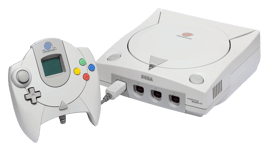
It should have been a success, but it wasn’t. The PlayStation 2 loomed on the horizon, and people held off buying a Dreamcast because they wanted a PS2. The Dreamcast sold well initially but lost steam fast. Sega pulled the plug in 2001, ending its run as a hardware maker.
Why Did Sega Consoles Fail?
If we’re ranking the reasons Sega’s consoles fell apart, here’s how it looks:
Bad hardware decisions – The 32X, the Sega CD, and the Saturn’s complicated design hurt their momentum
Marketing missteps – The rushed Saturn launch and mixed messaging around the Dreamcast didn’t help
Competition – Sony and Nintendo were too strong
Lack of third-party support – Developers weren’t fully on board, and that hurt game libraries
But let’s be real—Sega’s biggest enemy was itself. It had great ideas but lacked patience. Instead of perfecting one console, it kept jumping to the next big thing. Sony and Nintendo played the long game. Sega played hot potato with its own hardware.
The Legacy of Sega Consoles
Even though Sega lost the console war, it left behind a legacy that gamers still cherish. Sega wasn’t afraid to take risks, and in a world where gaming feels increasingly safe and corporate, that’s something worth celebrating.
So, dust off your Dreamcast, boot up Sonic CD, and give a nod to the company that dared to be different. Sega may have lost the battle, but it won our hearts.
Which Sega console was your favorite? Let us know!
Dive headfirst into the legacy of retro classics, only here on Raised by Retro! For your daily dose of retro gaming goodness, be sure to follow The Console Quest on social media.
Sega Master System (1986)
Sega Genesis (1989)
Sega Mega Drive (1988)
Sega CD (1992)
Sega 32X (1994)
Sega Saturn (1995)
Sega Dreamcast (1998)
Related Stories
Join our retro gaming community and get weekly updates, deep dives, and hidden gems—straight to your inbox!
